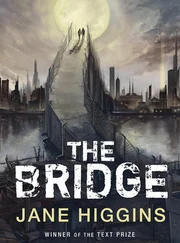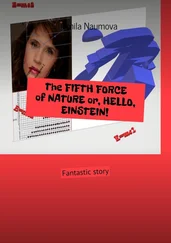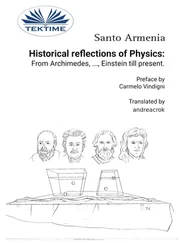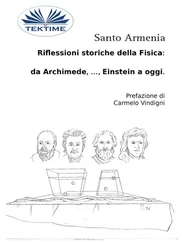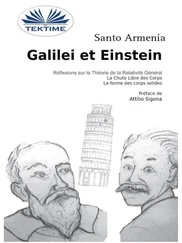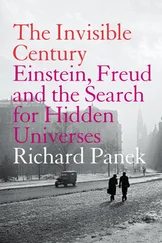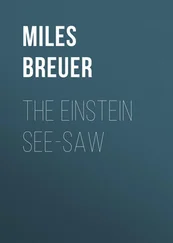“No problem,” said Alice, smiling. “He was only there for a week. He’s off on another project now.”
ROGER STOPPED THE CAR AND PEERED AGAIN AT THE crudely drawn map. He had never met Sheldon Reynald or been on the Stony Brook campus before, and so far he’d found that it was dismayingly large and diffuse by Cambridge standards.
Finally, after several detours down wrong roads, he located the physics building and parked his rental car in the large lot nearby. Like most of the rest of the campus, the physics building was constructed of bare precast concrete of what must have been considered bold modern design in the late 1960s, but now looked rather dated and unfinished.
Roger found Sheldon Reynald’s laboratory in the basement of the building. The lab door was open, and he walked in. A somewhat disheveled graduate student was seated before a bench in the corner, reading a paperback book. He looked up as Roger approached.
“I’m looking for Professor Reynald,” said Roger. “Is he around?”
“Actually, I’m Sheldon Reynald,” said the “student,” pushing the book under a stack of papers. “How can I help you?”
“Roger Wilkins of the Iris Foundation,” said Roger, pressing the graying beard to make sure it was secure before extending his hand.
“Dr. Wilkins,” Reynald said, “this is a surprise.”
“I couldn’t really stay away,” Roger said, “after I learned of your success with the alloy we’d suggested. I had to come and see the thing for myself. Where is it?”
“Over here,” said Reynald, pointing to a cluttered lab bench. “Behold the spin battery.”
Roger walked over and looked closely at the setup. An object that might have been an oversize doughnut covered with dull gray frosting occupied a central location on the table. Shiny coils of plastic-coated copper wire had been wound around and through the torus in several orientations, and leads were connected to standard laboratory measuring instruments, power supplies, and oscillators.
“It’s in charge-up mode now. Would you like me to run our little demo?” Reynald asked.
“Of course,” said Roger.
Reynald wheeled over a tall rack that had been against the wall. It supported a vertical slab of plywood on which were mounted row after row of lightbulbs. “This is a standard two-kilowatt load,” he said. “It’s made from twenty one-hundred-watt lightbulbs plus a cooling blower that uses another twenty watts. It’s about equivalent to what an electric stove might use with most of its burners on. We’ve been pumping up the alignment of the spin battery for about an hour since the last full discharge. Now I’ll disconnect the charging lines and hook it up to the load.” He disconnected the doughnut-shaped object from its attached leads, picked it up from the bench, placed it in a receptacle at the top of the rack, and connected several large-diameter cables. “Ready?” he asked.
“Sure,” said Roger.
Reynald flipped a switch. Immediately all the lightbulbs came on at full brightness, and the blower motor began to hum. “There you are,” he said. “As you can see, there are no external connections. The electrical power is all coming from the spin battery. Its present output is about two kilowatts. It will hold that output for several days before it needs recharging. Amazing, isn’t it?”
Roger looked at the gray doughnut again. “Does it get hot?”
“No,” said Reynald. “Go ahead. Touch it. The copper wires heat up, but the alloy itself doesn’t, except by conduction if it’s in contact with the wires.”
Roger put his finger on the gray surface of the doughnut. It felt cool to the touch. “The spin alignment stores the energy?” he asked.
“Actually,” said Reynald, “our preliminary evidence indicates that there may be a kind of ‘avalanche’ of spin alignments and modified atomic structure, resulting in an unprecedentedly large internal magnetic field. Most of the energy is stored in the magnetic field. The energy density increases as the square of the magnetic field strength, you know.”
“From your energy numbers, the magnetic field must be enormous,” Roger said, “and the internal forces, too. How can the thing stay together against such forces?”
“We’re not really sure,” said Reynald. “The effect doesn’t work at all if there are any cracks or structural imperfections in the alloy of the toroid. The magnetic field and degree of spin alignment are largest at the center of the alloy, while the surface field is very small. We’ve arranged to do some neutron scattering studies on one next week at Brookhaven to verify the size of the internal field.”
“But don’t you have estimates of the field?” Roger asked.
“Of course,” said Reynald, looking slightly embarrassed. “On the basis of output and size, the energy density inside the thing is about half a megajoule per cubic centimeter. Therefore, if the energy is stored completely in the magnetic field, the average internal field would be around 1,100 Tesla. Of course, some of the energy is stored in the aligned spins themselves, so that’s probably an overestimate.”
“That’s amazing,” said Roger. “That’s fourteen times the energy density of gasoline. Internal forces should tear the thing apart. With that amount of stored energy it should explode like a ton of TNT, yet it just sits there, not even getting warm.”
“We’re aware that the thing could be dangerous,” said Reynald, “if the structure that holds it together were disrupted. We did some tests to determine what it takes to disrupt one of these and cause it to dump its energy. As it turns out, it’s very difficult to disrupt. This one is perfectly safe, even if it was dropped on the floor. But with a suitable detonator it would make a spectacular explosive that would fly apart in a plane like a ruptured flywheel. One of the graduate students suggested that you could make a bomb that would explode in a plane five and a half feet off the ground, decapitating all the men while saving the women and children.”
Roger winced. “How can it be so stable?” he asked.
“No one knows,” said Reynald. “I’ve been playing with a theory which suggests that the same phenomenon that aligns the spins also provides increased atomic binding and structural strength.”
Roger nodded. “Perhaps that’s possible,” he said doubtfully.
“Now I have a question,” said Reynald. “Our choice of this particular copper-bismuth-holmium alloy was done at the suggestion of your foundation. I’d like to know where that suggestion came from, and if you know any more that you haven’t told us. Dammit, I feel like a fraud, discovering something that is clearly of great importance, but which may actually have been someone else’s idea.”
“I’m afraid I can’t tell you the origins of the suggestion,” Roger said. “Not yet. But I can assure you that no one is going to claim that you stole their idea. When you publish your results, you’re free to say anything you wish, including nothing at all, about the source of the information.”
“But the spin battery is a major breakthrough,” said Reynald. “It should be worth a Nobel prize. This discovery is more important than warm superconductors, because it has immediate applications. And the patent rights are going to be worth a fortune.”
“Yes,” said Roger. “You’re about to become very wealthy. According to our contract, the patent rights will be shared equally between you, the foundation, and your university. We’ll file the patent application as soon as you’re ready and push it through the inspection process rapidly, to minimize any delay in publishing your results in physics journals.”
Reynald nodded. “If there are no hidden problems, the chemical storage battery is obsolete. Soon everyone will be driving high-performance electric cars powered by a bank of spin batteries weighing a few pounds. It’s a revolutionary technology. The availability of a cheap portable device for storing energy changes everything.”
Читать дальше


